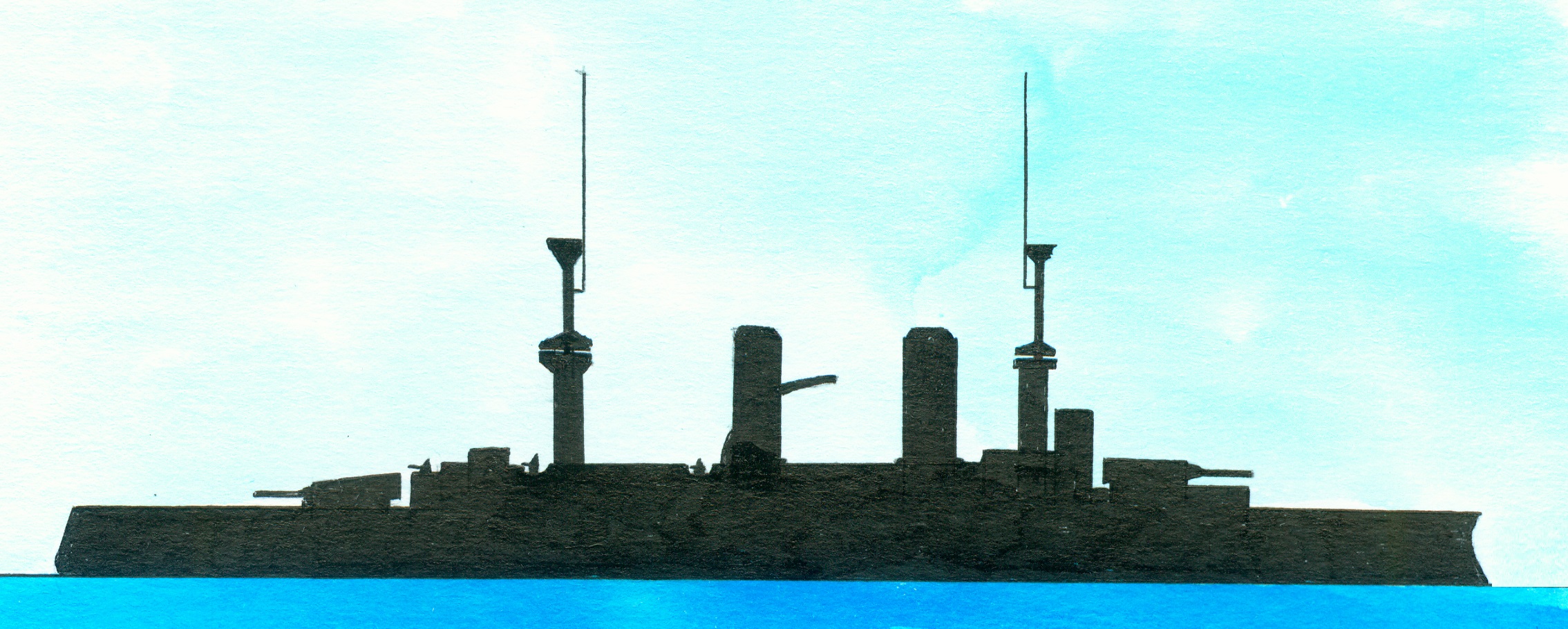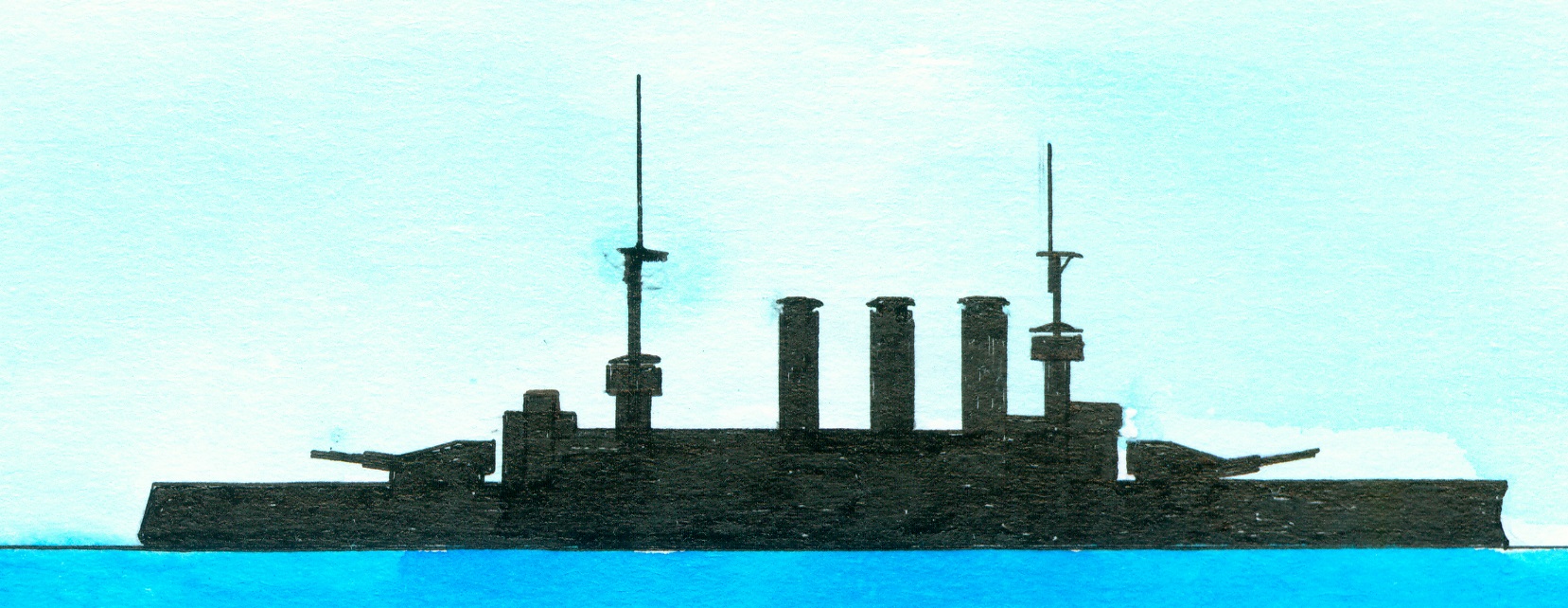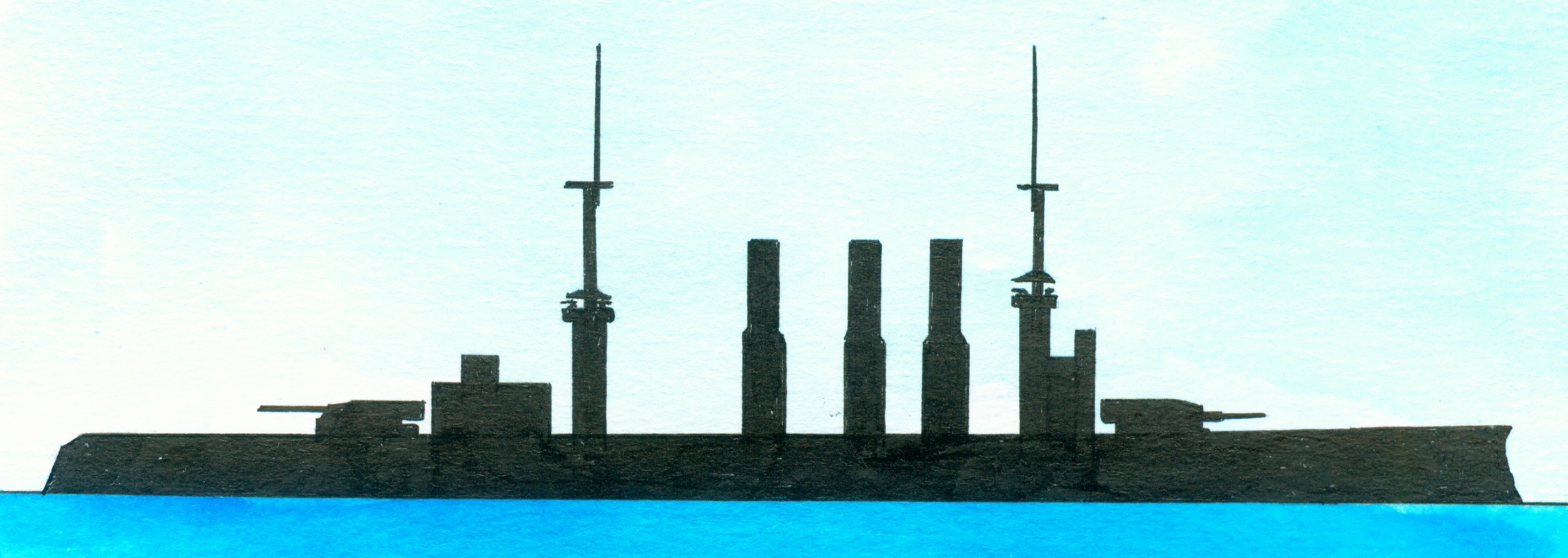Wittelsbach-class
Braunschweig-class
Deutschland-class
As target around 1937
Of the Braunschweig-class consisting of the Braunschweig, Elsass, Hessen, Lothringen and Preussen. Preceded by the Wittelsbach-class and succeeded by the Deutschland-class. General technical specifications of this class. With a displacement of 13.208 (design)-14.394 (full load) tons and as dimensions 126 (waterline)-127,7 (over all) x 22,2 x 8,1 metres or 413.3 419 x 72.10 x 26.7 feet. The hull was fitted out with a double bottom of 60% of the length and further more divided in 13 watertight compartments. The class had good seagoing qualities although with a intentioned to pitch heavily. The 3-shaft triple expansion engines and 8 Marine type boilers and 6 cylinder boilers supplying 16.000 ihp via 3 screws. Originally coil-fired, after 1916 also oil-fired. Speed 18 knots and with a speed of 10 knots a range of 5.200 nautical miles. Their crew numbered 743 men included 35 officers. The Krupp manufactured armour consisted of a 10-22,5cm/3.9-8.9” thick belt. a 4cm/1.6” thick deck with the main gun turrets protected by 25cm/9.8”, conning tower by 5cm/1.97” (roof)-30cm/11.8” (sides), the secondary battery turrets by 15cm/5.9” and the casemate gun shield 7cm/2.75” thick armour/ The armament consisted of 2x2-28cm/11” quick firing L/40 guns, 14-17cm/6.7” guns, 14-8,8cm/3.5” guns and 6-45cm/18” torpedo tubes for which 16 torpedoes were taken with them.




